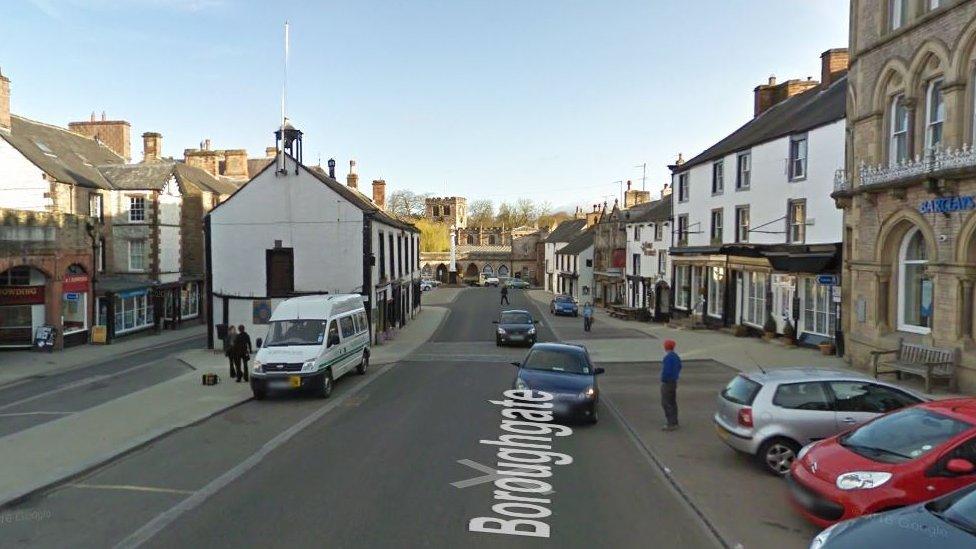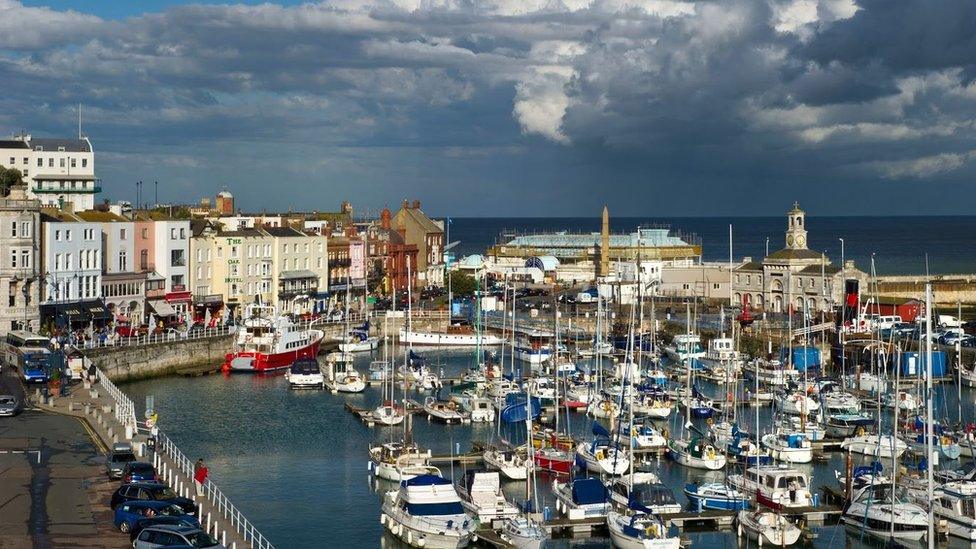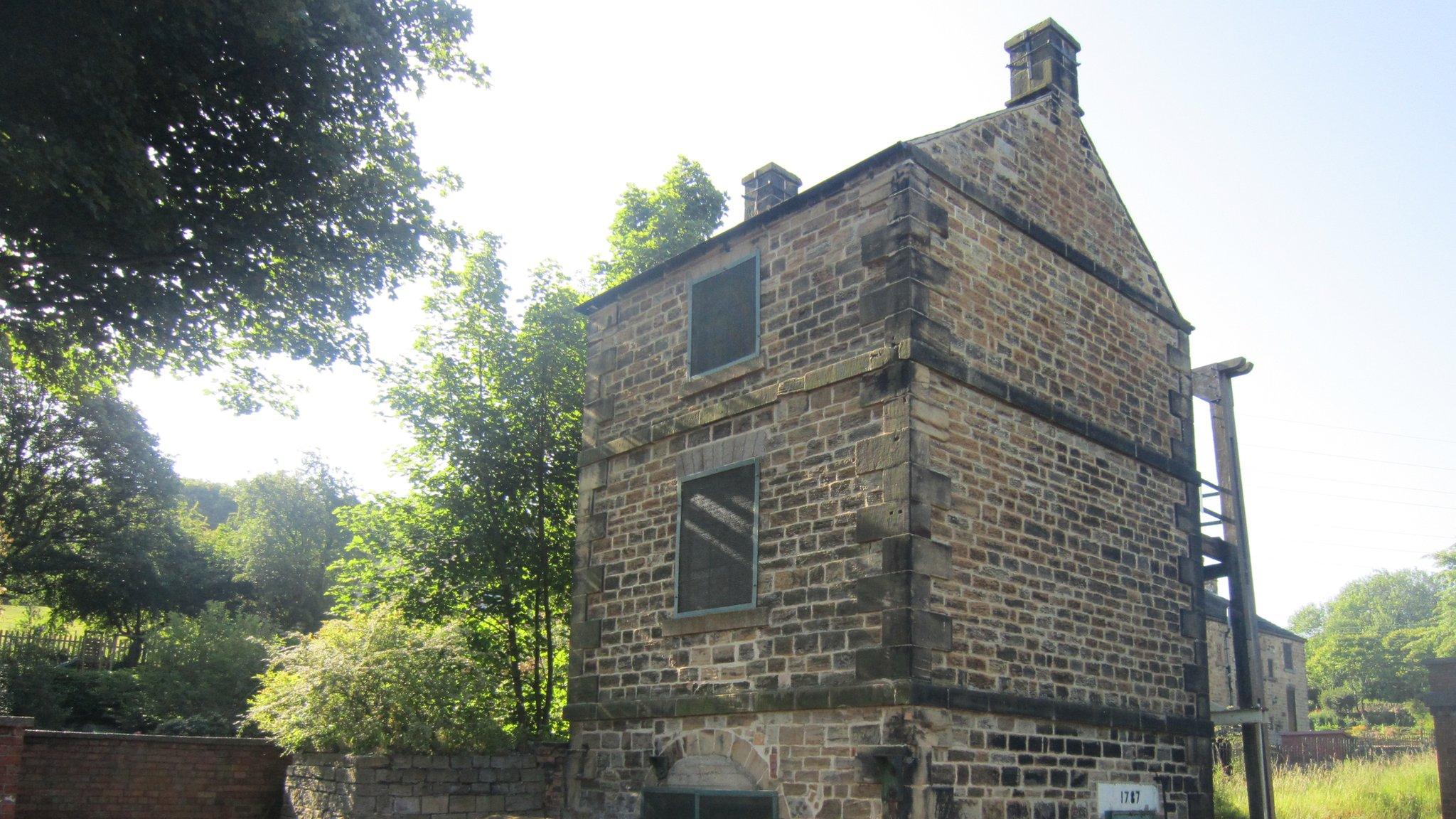Coventry and Hull among 10 'historic action zones'
- Published

Historic buildings in Hull's Old Town as part of the Heritage Action Zone funding
Ten places in England have been chosen to share £6m to restore neglected listed buildings and boost conservation areas to encourage visitors.
Historic England said the funding would create economic growth, "bringing historic places back to life".
The "Heritage Action Zones", which include Hull, Coventry and Ramsgate, were chosen for their "rich heritage and untapped potential".
Each place will benefit from a share of £6m over the next five years.
The 10 locations are: Appleby in Cumbria, Coventry, Elsecar in South Yorkshire, Hull's Old Town, King's Lynn, Nottingham, Ramsgate, Sunderland, Sutton in South London, and Weston-super-Mare.
Historic England said it would work with each local authority.
Neglected listed buildings, it said, will be restored and brought back into use as housing, retail or community spaces.
Conservation areas will also be improved to kick-start regeneration, and historic sites will be developed as visitor attractions, Historic England said.
Heritage Action Zones featured in last year's Culture White Paper, external with an aim to build tourism, reinvigorate local areas and grow local economies.
Carol Pyrah, of Historic England, said the investment had already "unlocked partnership funding" from elsewhere.
"It's about tourism but also tackling the need for housing and making places more attractive for people to live in and businesses to invest in," Ms Pyrah said.
Local authorities applied for Heritage Action Zone status, and Historic England plans to award it to more places over the next two years.
Tracey Crouch, Heritage Minister, said: "Our heritage and historic buildings are beautiful assets that make our towns and cities unique.
"They tell the story of a town's past and should be protected and cherished."
Sally Balcombe, VisitEngland chief executive, said the investment would "spread economic growth through tourism across England".

Elsecar, South Yorkshire

Elsecar is already the location of a heritage centre but Historic England said the funding would "unlock the village's industrial past with its ironworks and collieries, but also the story of the village, its community and links to the Fitzwilliam family".
Historic buildings will be brought back into use and suitable sites for new housing will be identified, and local people will be encouraged to get involved in the village's development.

The 1795 Newcomen Beam Engine at Elsecar Heritage Centre is the oldest steam engine in the world still in its original location

Appleby-in-Westmoreland

Appleby in Cumbria suffered severe flooding in winter 2015-16.
Heritage Action Zone status aims to help the economy recover, and important listed buildings, such as the Keep at Appleby Castle, will be repaired. Heritage trails will also be created.
Appleby's Mayor, John Pape, said overall investment over five years was expected to be about £1.65m.
He said: "We are over-the-moon that Appleby has been chosen. The heritage of the town is key to attracting tourism and is a vital factor in supporting the local economy."

The council-owned Moot Hall on Boroughgate in Appleby is one of the projects included, after a recent survey revealed it needs substantial repairs caused by damp

Weston-super-Mare

Marine Lake in Weston-super-Mare, 1925-35. The funding will support ongoing regeneration in Weston-super-Mare - and existing buildings will be used for quality housing
Weston-super-Mare town centre has many Victorian, inter-war and post-war buildings.
Historic England's plans include using existing buildings for quality housing, enhancing heritage trails from the town to the beach and station, and opening up new pedestrian access to Weston Museum, the town square and the seafront.

Coventry

Coventry city centre could potentially be registered, making it one of only a handful post-war conservation areas in the country
Carol Pyrah, of Historic England, said: "There are loads of locations where heritage is overlooked - Coventry's 20th Century heritage is a really good example".
The funding will help improve issues surrounding education, jobs, health and housing in Coventry, the organisation said, and grants will be given to improve historic buildings and shop fronts in Lady Herbert's Garden and the Burges conservation area, with a view to removing it from the Heritage at Risk Register.

Coventry was rebuilt after the World War Two Blitz

Sunderland

High Street in Sunderland is full of historic, vacant and "at-risk" buildings, for which new uses will be found to improve the appeal of the whole area, attracting new businesses and creating jobs
In Sunderland, the Old Town will be brought back in line with the city centre, Historic England said, "extending the prosperity of the city centre to the waterfront and port".
Ms Pyrah said: "Sunderland old town is really left behind, the old high street has lots of listed buildings in a terrible state and there's a real opportunity to reconnect that area."

Hull old town

For hundreds of years Hull's Old Town was the busy heart of the city and is home to 40% of the city's listed buildings - but many are unused
Historic England said Hull's Old Town will be "brought back to life", finding new uses for historic buildings, including as housing.
It said it would also improve access to the waterfront, city centre and museum quarter, which have already benefited from investment from Hull City of Culture 2017, and the fruit market and marina area, which has also been renovated.

Historic buildings in Hull's Old Town as part of the Heritage Action Zone funding

King's Lynn

King Street in King's Lynn in 1946, with the Custom House to the left and entrance to Purfleet Street on the right
Funding in King's Lynn will "help kick-start economic growth by delivering new homes and jobs" and investment will be encouraged into the town centre and historic riverfront.
Historic England said the money would also be used to address an "acute housing shortage" by building new homes on former industrial land while ensuring the character is protected of King's Lynn's existing historic architecture.

Nottingham

General view of Nottingham Market stalls, around 1885
In Nottingham, "new life will be breathed into the town's vulnerable historic buildings and sites", Historic England said.
There are also plans to open up Nottingham's hidden caves.

A view along Queen Street in Nottingham, towards the Market Square

Ramsgate

The plan for Ramsgate in Kent, once one of the great seaside towns of the 19th Century, is to bring it back to life by repairing its listed buildings
The once-thriving seaside town of Ramsgate will be given funding to improve the harbour, and also to attract skilled workers and create apprenticeships for local people, Historic England said.
Georgian and Victorian buildings around the Royal Harbour and Newington area, which was built for miners, will also be used again.

Ramsgate will seek to attract visitors by improving the harbour area

Sutton, south London

Sutton High Street is on the at-risk register and the area is on the verge of significant change, as one of the 11 centres identified in the London Plan as an area for growth.
Sutton is already the fourth-largest hub in south London, with 25,000 people visiting each day.
About 50 sites will be redeveloped, including more than 5,000 new homes.
The main objective is to preserve Sutton's character by investing in and repairing historic buildings, and reinstating traditional details.

- Published22 December 2015

- Published20 August 2014

- Published12 October 2012

- Published20 June 2012
